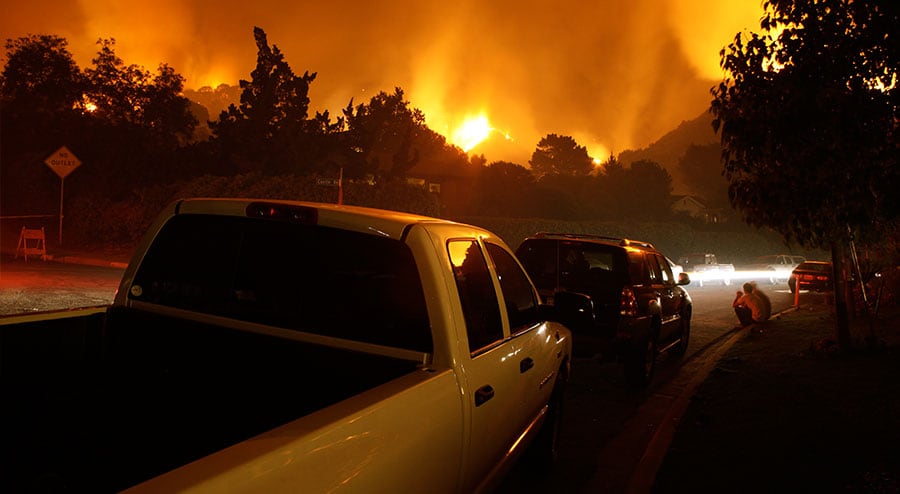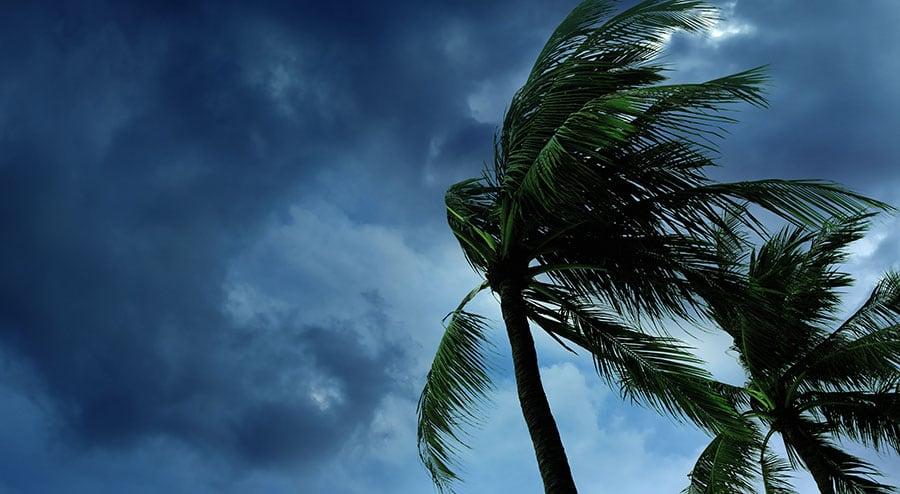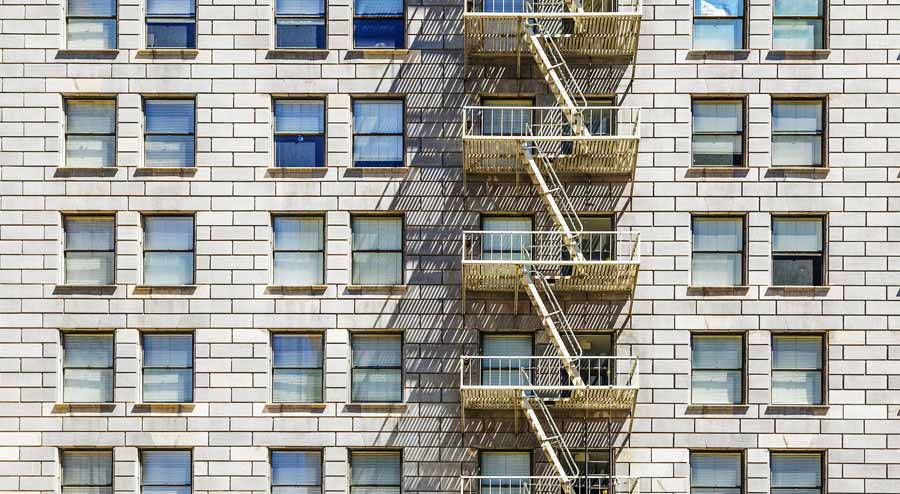In September 2017, Hurricane Irma made landfall in the United States on the shores of Cudjoe Key, Florida, and later, Marco Island, Florida. By the time it reached Marco Island, it had weakened to a Category 3 storm, meaning winds topped out below 130 miles per hour—still a strong storm, but far less powerful than the 180 mph winds it reached when making landfall in Puerto Rico a couple days before it impacted the continental U.S.
Because of the storm’s high intensity, residents all across Florida made sure to be extra prepared. Original forecasts predicted that the storm would pass over the state’s heavily populated east coast, but by the time the storm landed, it bordered the west coast—more than 100 miles away from the original area that was predicted to be impacted the most. Nevertheless, the whole state was affected, with the storm causing more than 30 deaths. The most severe and compacted case of death came from one nursing home in Hollywood Hills.
In the month after Hurricane Irma hit, it was revealed that a total of 14 seniors from the Rehabilitation Center at Hollywood Hills had died. The loss of power and the failure to have sufficient back up energy prevented the nursing home from giving the seniors the help they need in the immediate hours following the storm. Many of those died due to heat-related illnesses. One patient had an internal body temperature as high as 109.9 degrees Fahrenheit when they died.
And the worst part of the story: there is a large hospital that sits across the street from the nursing home. The deaths are being investigated as a part of a criminal investigation. The nursing home was not prepared to deal with a natural disaster, and there was no plan in place to help the vulnerable and immobile seniors. The home’s employees paid the price, too, as the nursing home’s license has been suspended, and nearly 250 employees were let go.
When a natural disaster hits, seniors are one of the most defenseless and affected groups due to their immobility and, at times, being bunched up en masse in places like nursing homes and assisted living facilities and not being able to leave. It’s imperative that seniors—whether they’re living on their own, with relatives, or under medical care—are protected when they are in harm’s way.
Seniors Affected By Disasters—Why And How Many
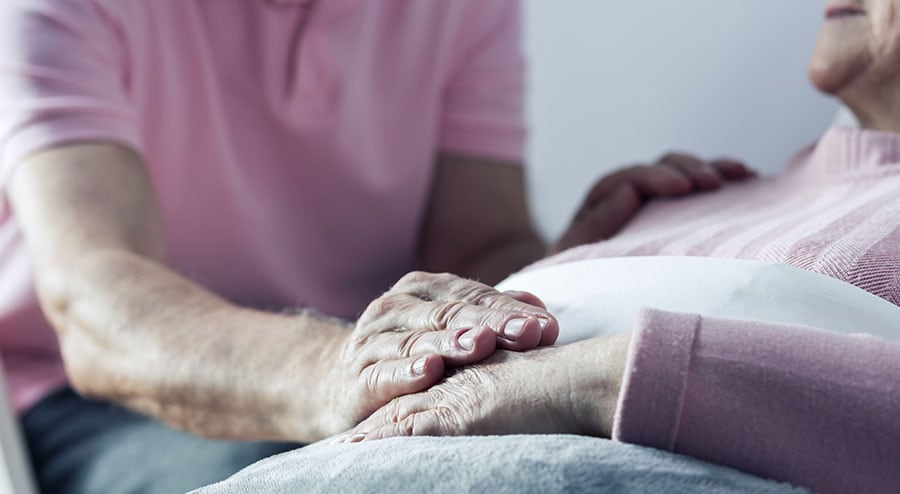
The elderly are affected by natural disasters more than others for a slew of reasons, many of them medical. Some simply don’t have the mobile means of getting away from an impending disaster, and once a disaster happens, their health is affected because of their own physical roadblocks preventing them from getting care. There is also great difficulty in getting care due to the amount of seniors who need immediate medical attention following a disaster, whether it be for continued chemotherapy treatment or rounds of dialysis.
There are other reasons why seniors may be affected in greater amounts, and some are based on feelings of pride or stubbornness to accept the severity of a situation. These reasons can include:
- Waiting too long to evacuate an area
- Not leaving because they didn’t evacuate for previous disasters and they survived those
- They simply can’t get the help they need because they are too far from immediate assistance
These reasons can cause seniors to die by the hundreds or thousands depending how bad a disaster can get. Consider these figures from recent disasters:
- More than 60 percent of the 22,000 people who died in the 2011 Japanese earthquake and tsunami were seniors.
- Of the 117 people whose deaths were result of Hurricane Sandy in 2012, the mean age was 60 and the median age was 65.
- “Over half of the people who died in Hurricane Katrina were age 65 and older,” Elaine Wethington, a professor Cornell’s Aging and the Environment Initiative, said. The CDC reports that that number climbed up to over 70 percent in the years following the hurricane.
- Nearly half of the 153 victims of the 2012 tornadoes in Joplin, Missouri, were over the age of 55, and many of them were residents of nursing homes or in the hospital.
From 2004 to 2013, the International Red Cross reported that more than one million people died from natural disasters worldwide—an average of more than 100,000 people per year. Based on previous natural disasters, it’s fair to assume that a majority of these deaths come from the elderly due to their inability to get out of harm’s way and get the dire help they need.
Types Of Disasters That Affect Seniors
Seniors are vulnerable to any type of disaster—no matter if they have fair warning that one is coming or if one arrives at their front door with just a couple hours notice. Since 1900, these natural disasters have caused the most fatalities in the United States:

Hurricanes:
Though hurricanes offer the most ample amount of time to prepare for, they also cover a wider range than any natural disaster can and have a more widespread impact. The biggest impacts hurricanes can have are high winds and heavy rain, which can knock out power at (or even completely knock down) large residential communities for weeks or months at a time. They can also cause flooding that can swarm first floors of buildings, which is a major threat to immobile seniors living on the bottom floors of buildings. Debris from hurricanes can also block off roads, preventing food and water from getting to seniors and not allowing seniors to leave and get the help they need.

Floods:
Whether they happen because of hurricanes and thunderstorms, floods can further ensure immobile seniors have no way to leave the area. Bedridden seniors and those who struggle to walk are at risk when they can not get to higher elevation quickly enough. This can cause them to be partially submerged in water for lengths of time (which can cause disease or infection), drown, or get electrocuted by downed power lines.
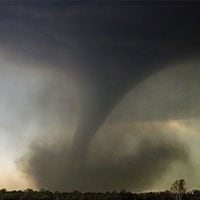
Severe weather/Tornadoes:
Severe weather systems are similar to hurricanes in the fact they can knock out power and create heavy rainfall, but these episodes are far more compacted and last for shorter amounts of time. With little notice, high winds can rip through areas, not giving residents any time to find better shelter. If severe weather events like tornadoes occur in an area where a nursing home or hospital is, they can wipe out seniors’ living situations when they can’t find shelter.

Heat waves:
Seniors’ body temperatures can quickly rise in the absence of proper ventilation or air conditioning, and exhaustion and dehydration can kill them. During heat waves, when electricity grids can falter from overuse, seniors are especially at risk. Their bodies can heat up and fall ill, particularly when they’re unable to get to a treatment facility quick enough. For example, hundreds of isolated seniors died in a 1995 heat wave in Chicago due to heat-related illnesses.

Earthquakes:
Ground-shaking events can cause entire structures—like nursing homes and power grids—to collapse, so the aftermath of earthquakes can be severe. If an earthquake happens in a hot, humid area, seniors can be trapped inside homes as sweltering weather builds up around them.
Though disasters like hurricanes offer days or even weeks notice before making landfall, events like earthquakes and flash floods can happen in an instant, so it’s important to know how to handle the situation before, during, and after the event.
How To Prepare For A Natural Disaster
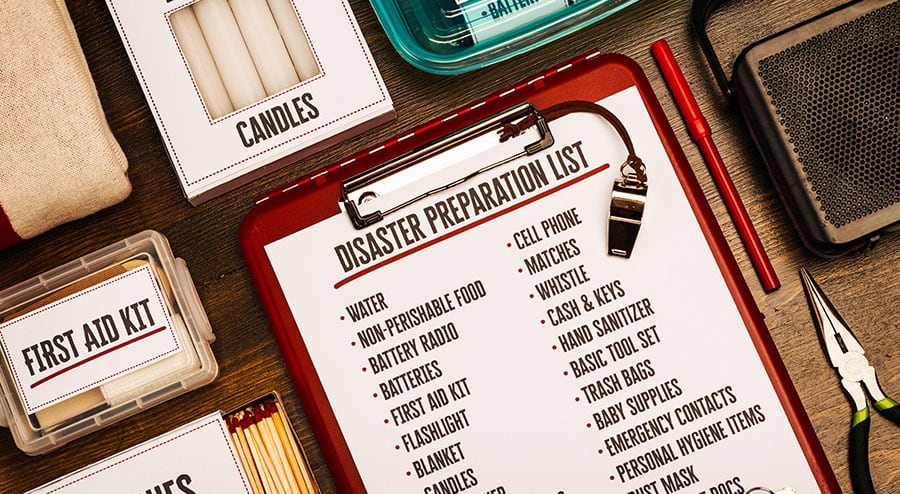
Lack of preparedness is a large issue with the elderly when it comes to surviving a natural disaster. A study by the University of Iowa’s College of Public Health found that about two-thirds of more than 1,300 surveyed adults aged 50 and over across America said they had not “participated in an educational program or read information on how to prepare for a disaster.” Also, just a quarter of those surveyed said they had a disaster plan ready.
“The problems we found are troublesome, but they shouldn’t be insurmountable,” said Tala Al-Rousan, M.D., the study’s leading author. Al-Rousan added that there are ways for seniors to easily be informed and prepared in case of a disaster.
If a senior resides in a nursing home or assisted living facility or is in a hospital at the time of a disaster, the facility should have a plan in place if anything were to happen to the structure of the building. These facilities have multiple backup generators and are often some of the first places that are restored to full power, so the elderly and other people affected by the storm get the help they need. The American Health Care Association has guides for these different facilities to follow in case of an emergency. Each facility probably has a plan that is vaguely similar to one of these guides.
A majority of seniors aren’t staying in one of these facilities during a disaster, though, and they’re often either alone, with relatives, or with members of the community. It’s imperative that seniors—and those helping them—are informed about what to do in the events leading up to and during a disaster. Here are some steps you can take to ensure you’re as ready as possible when catastrophe hits, as suggested by the Red Cross.
Get An Emergency Kit
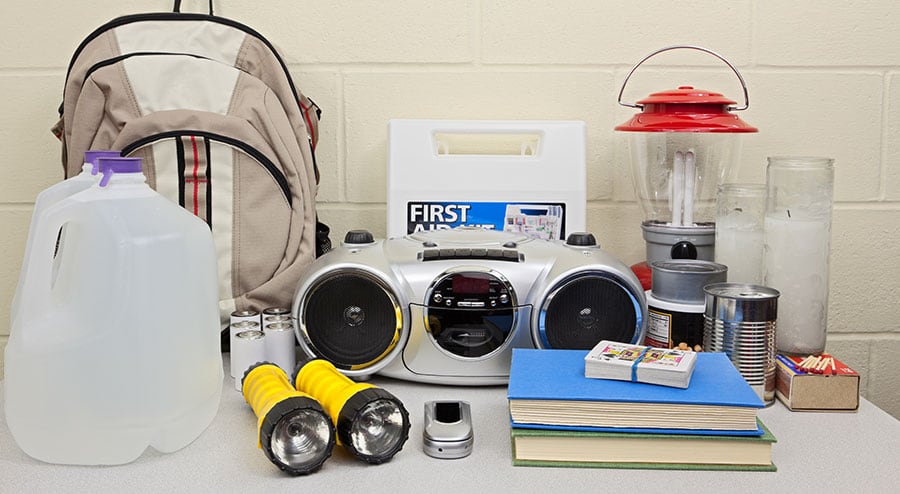
The first step in surviving a disaster is making sure you have an emergency kit handy with enough supplies to last you during the storm and a couple days after. And we don’t mean a small First-Aid kit just in case you need some ibuprofen or have a small abrasion. A package with band aids, gauze, sterilizers, and more should be the first of many items you secure for an emergency kit.
Your emergency kit should be the size of a duffel bag or a backpack that doesn’t get too heavy, so you’re able to easily move it. If mobility is an issue, look into duffel bags with wheels to assist with the strain a kit may place on your body. Everyone’s emergency kit will be different depending on your health needs, if you have a pet(s), and other factors, but here are some items your emergency kit should absolutely include:
- Flashlight and batteries
- Water
- Non-perishable food
- Cash (just in case ATMs are down for more than a couple days)
- Medication for a few days
- ID card
- Copies of important documents (deed to your home, social security card, etc.) just in case you have to leave your home or documents get destroyed during the disaster
- Sanitation items (hand sanitizer, toilet paper, toothbrush/paste, etc.)
You should also make sure your vehicle isn’t immobilized during a disaster. You can leave an emergency kit of things specific for your car in the trunk or in your garage within close range of the vehicle. These items can include:
- Jumper cables
- An extra set of keys
- Gas (do not leave this in the trunk of your car)
- Maps of the area
- Water
- Flashlights
- Tool kit
- Tire repair kit
Make A Plan
The next step—after securing the necessary items to ensure you survive the days following a storm—is to make sure that you have an idea of what to do once disaster does strike.
Stay In Touch
Make sure you’re on the same page as other family members around the country in addition to friends and neighbors in your community. Connect with them before a storm so everyone has someone watching each other’s back. You should also make sure you have contact information for someone outside of the affected area just in case you need a place to stay for a couple days or weeks before your residence is liveable again.
In a time where it’s easy to forget phone numbers as they’re often stored in your phone then forgotten, write down a couple emergency contact numbers, and wrap them up safely so they can’t be damaged by water. You may reach a point where your phone is no longer charged or working, and you’ll need to borrow a phone or use a landline in order to get in contact with loved ones.

Know Your Evacuation Route
If your area becomes unsafe, you need to know how to get out of your town or city. Typically, cities have designated routes that can handle increased traffic. Cities will often open up both directions of a highway to force all traffic one way (out of the city) and not allow anyone else in—or at least not on the main points of entry.
You should plan an evacuation route of your own, whether it’s on the city’s designated route or one more specific to your needs. The latter may include going to someone else’s house that isn’t in the dangerous area, getting to an evacuation shelter in the city, or just a different route you’re confident will get you out of the disaster area the quickest and most efficiently. Practice your evacuation route a couple times a year just to make sure roads haven’t changed, construction hasn’t altered trusted routes, or traffic has since shifted to these routes.
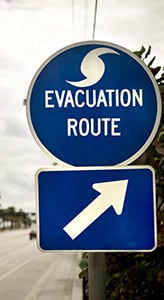
Keep Your Home Safe
If you have to leave your home, it’s important that you leave it at the most secure level possible before evacuating. To do this, here are some steps to follow:
- Board up: Putting up shutters can help prevent wind damage from high-speed gusts and debris that’s flown around amidst a severe storm or hurricane.
- Turn off the gas and electricity: Shutting off gas lines can help prevent your house from erupting on fire in case of a line breaking and filling the structure with flammable fumes. If you turn your gas off, only a professional can turn it back on, so be subjective in your decision to shut the gas off—you may not have to.
- Secure all important belongings: Make copies of important documents and place them in a sealed safe or safety deposit box in a location outside of your home. The same goes for any spare cash or valuable belongings—make sure they’re secure inside your home or a trustworthy location outside of it.
- Get insurance: If you have enough time, lockdown insurance coverage on your residence. Homeowner’s insurance and flood insurance should cover just about any damage your home suffers from a disaster.
- Take pictures: Snap photos of what your house looks like before a disaster, so you can prove to an insurance company what valuables you had in your home and what it looked like before. This helps ensure you get the full claim you’re entitled to.
- Check alarms: If you do stay in your home during a disaster, check all alarm systems in your home to make sure they’re on and working. These include: smoke detectors, carbon monoxide alarms, and security systems. Even if you leave your home, if these systems are on and working, they can let you or other emergency responders know that your home isn’t a safe area when entering the premises.
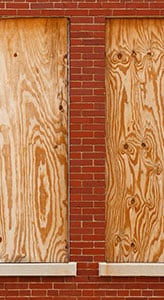
Shelter
There are times when seniors can’t follow these plans completely on their own, and they need other people’s help. Thankfully, in many areas around the country, the community is there to assist you. If you are physically unable to stick out a storm in your own home—whether it’s because there’s a mandatory evacuation and floods threaten your home or you’re worried about what will happen when you lose power—you still must have a plan to evacuate before the disaster hits or in the aftermath once it does.
While there is no singular national database for shelters in individual communities, you should call around and visit your county’s or city’s official websites to find out where you will be able to stay during a storm, what you are allowed to bring, how to get there if you need assistance, and how long you will be able to stay. Usually if given enough warning, the American Red Cross and the Federal Emergency Management Agency (FEMA) may be in your area to assist with shelters, as well.

Be Informed About The Situation
Once your kit is ready and you’ve practiced and are confident in putting your emergency plan into practice, the final step is making sure you’re informed about the impending disaster and how to get help afterward.
In the case of hurricanes and tsunamis, where you may have at least a couple days notice, stay up-to-date with local news and what they predict will happen. The severity of these events can determine whether or not you have to evacuate immediately. Aside from the news, there are other warning/information systems in the community to inform you of an impending disaster:
- Local fire and police departments: They are usually some of the first people to know about an impending disaster—and they know how to handle it afterward.
- NOAA Weather Radio: A 24-hour radio station that updates weather patterns and disasters every five minutes or so. Listings for your area can be found here.
- Emergency Alert Systems: In some areas with greater likelihoods for tsunamis, volcanic eruptions, tornadoes, and earthquakes, there are loud emergency systems that ring and let you know of an upcoming event, so keep your ears peeled.
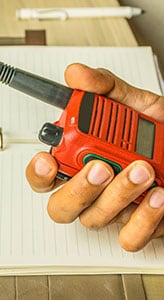
It’s also important to stay in contact with members of your community. Before, during, or after a disaster, keep on the lookout for people and other seniors who may need assistance if you have the capacity to help.
After The Disaster
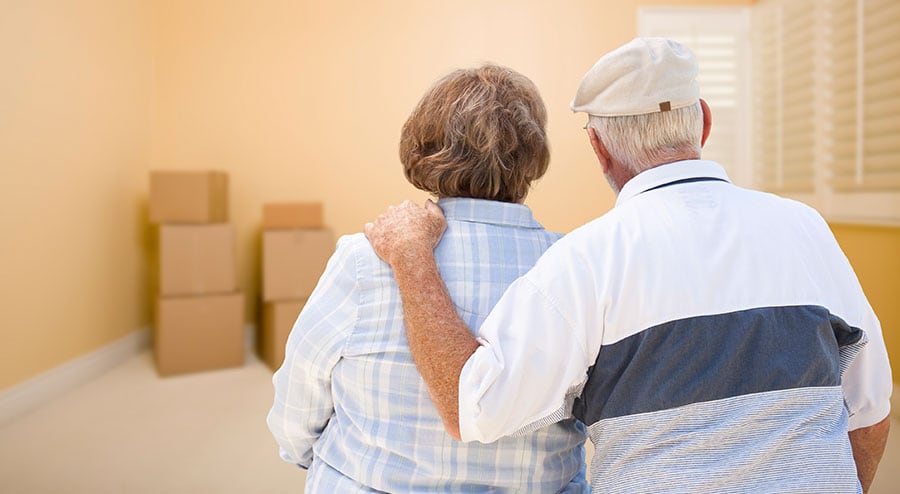
As we saw by the 14 seniors who died as a result of Hurricane Irma, how seniors are protected after a disaster is just as important as during. If power is knocked out, it may take days, weeks, or even months to fully restore it in your area, so you must have a plan for the aftermath of a disaster.
As we discussed, you should take your medical needs into account when choosing where to go when evacuating a storm or where you’re going to go after a tornado or earthquake hits. Hospitals and government (local or national) evacuation centers should be the first place you visit or evacuate to if you know you need special medical attention that will be altered in the event of a disaster. In this case, after the storm, these are the type of places you should get to first after a storm. The sick, injured, and endangered are the first people hospitals and evacuation centers tend to in these dire situation.
If your health is okay, it may be difficult to even get back to your home due to lack of gasoline and the roadway situation pending on the disaster. Floods from hurricanes can block off entire sections of cities, and cracked roads caused by earthquakes can render main roadways useless.
Do not walk in flood water. Downed power lines can still be active and hidden under floods, and they can electrocute those who come in contact with the water. Wait for help before venturing out on your own to try and leave an area or get back to your home.
In the aftermath of disasters, you need to watch out for less severe—but still potentially dangerous—events like aftershocks from earthquakes and straggling thunderstorms after hurricanes and tornadoes. Not only can these stop emergency services from continuing to do their jobs, they can cause more damage by toppling more buildings and bringing more rain water to add to floods.
Agencies That Can Help Seniors
You aren’t alone in the event of a disaster. Specific government agencies and humanitarian organizations exist for these situations, and they help citizens get the help they need when in danger and everything has been taken from them. Let’s take a look at some of the organizations available to help.
- FEMA: This agency exists specifically to “support our citizens and first responders to ensure that as a nation we work together to build, sustain and improve our capability to prepare for, protect against, respond to, recover from and mitigate all hazards.” Though there may be political red tape FEMA has to go through to get to your area and start helping with recovery, they are a vital service that will help seniors get the help they need as fast as possible—whether it’s food, shelter, or medical assistance.
- American Red Cross: A humanitarian organization that helps provide emergency assistance, the American Red Cross has helped seniors prepare for, escape from, and survive disasters since the 1800s.
- National Guard: The National Guard focuses on helping with disasters on America’s turf. Members of the National Guard help rescue citizens from flood waters and dangerous areas post-disaster. They are tactically trained to implement life-saving plans and assist with what citizens need after disaster strikes.
- Local police and firefighters: Police and firefighters are often the first groups of people out helping and saving people from disasters once conditions are safe. These local workers know the area well, and can help save you from a flooding home (your own or an assisted living facility), so don’t hesitate to call. In the immediate aftermath, don’t call 911 to get updates on a situation—there are other resources for that. But don’t hesitate to call if you are in danger.


